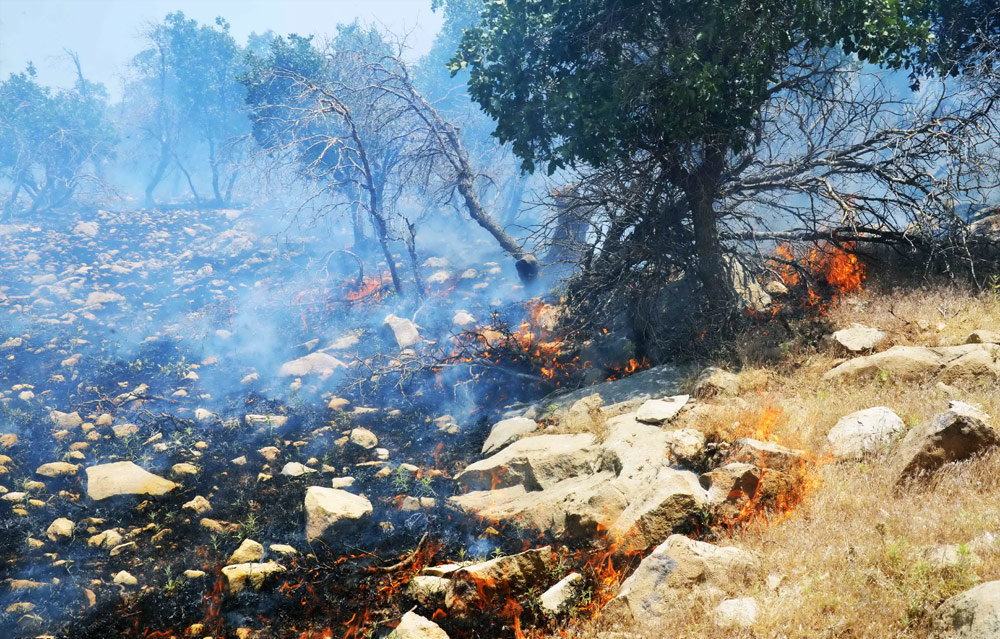Fires that frequently incinerate large portions of Iran’s dwindling forest areas inflict upward of 3.2 trillion rials ($94 million) in damages every year, according to a senior official at the Forests, Range and Watershed Management Organization.
“On average, wildfires destroy 15,000 hectares of woodlands every year,” FRWO chief Khodakaram Jalali said on Tuesday, Mehr News Agency reported. In the last calendar year that ended in March, fires spread through more than 44,800 hectares of forests, irreparably destroying 18,000 hectares.
According to the official, the Zagros Forests — which cover 6 million hectares, stretching from northwestern to south-central Iran — suffer the most damage.
Lush forests are logged for timber, cleared to grow food, and destroyed by the impacts of climate change. Furthermore, overgrazing by livestock and tribal conflicts have made matters worse.
Last year, more than 200 hectares of wooded areas were burned to ashes across Iran due to tribal disputes the got out of hand, leading to clans incinerating portions of forests inhabited by rivals.
“About 95% of all wildfires are caused by humans, around 85% of which are accidental,” said Khodakaram Jalali, who doubles as deputy minister of agriculture. Building campfires in drought-hit forests or improperly extinguishing them are the usual causes of accidental manmade wildfires.
Equipping Vulnerable Regions
Last year, authorities had warned about frequent wildfires due to unabating drought and a scorching summer season. Within the first 5 months of the year, about 7,000 hectares of forests across the country were burnt in 823 cases of wildfires — a 23% rise in the number of wildfires compared to the same period a year before, according to FRWO.
This year, things may be worse. Iran is expected to experience a summer season about 1 to 1.5 degrees Celsius hotter than average, which could increase the risk of wildfires.
To help minimize wildfire damage this year, Jalali said 32 fire stations have been set up throughout the country, while vulnerable regions have also been equipped with 800 fire engines and 290 firefighters.
One of the main reasons why wildfires destroy swaths of woodlands is the lack of equipment at the disposal of local authorities.
“The FRWO doesn’t have helicopters to help fight forest fires. To address the problem, we’ve reached an agreement with the Armed Forces of Iran and the Disaster Management Organization to make use of their air fleet,” Jalali said. The choppers will be stationed in six regions believed to be vulnerable to forest fires, mostly in western regions.
However, based on a report by Tabnak news website published earlier this week, aside from “publishing some educational infographic” and “promising to hold workshops on how to extinguish flames,” the FRWO has done little else.
Just over 6% of Iran is covered in forests, which may not seem much, but considering the country’s location in an arid and semi arid region of the planet, it is a blessing.


